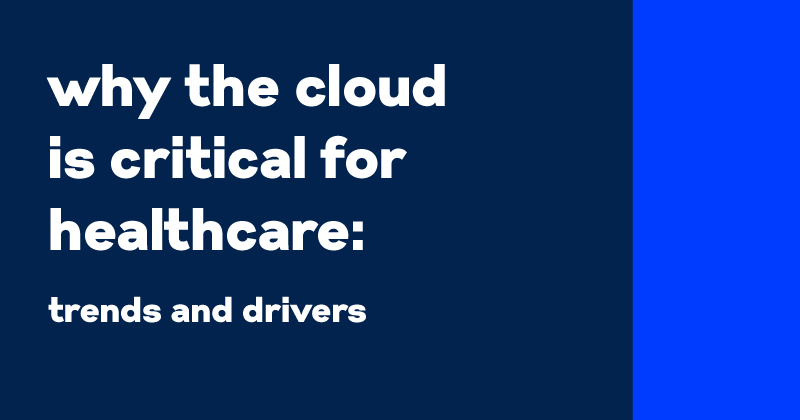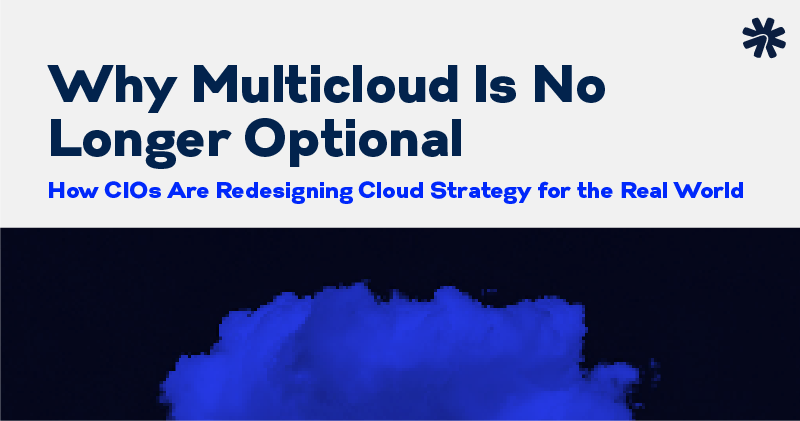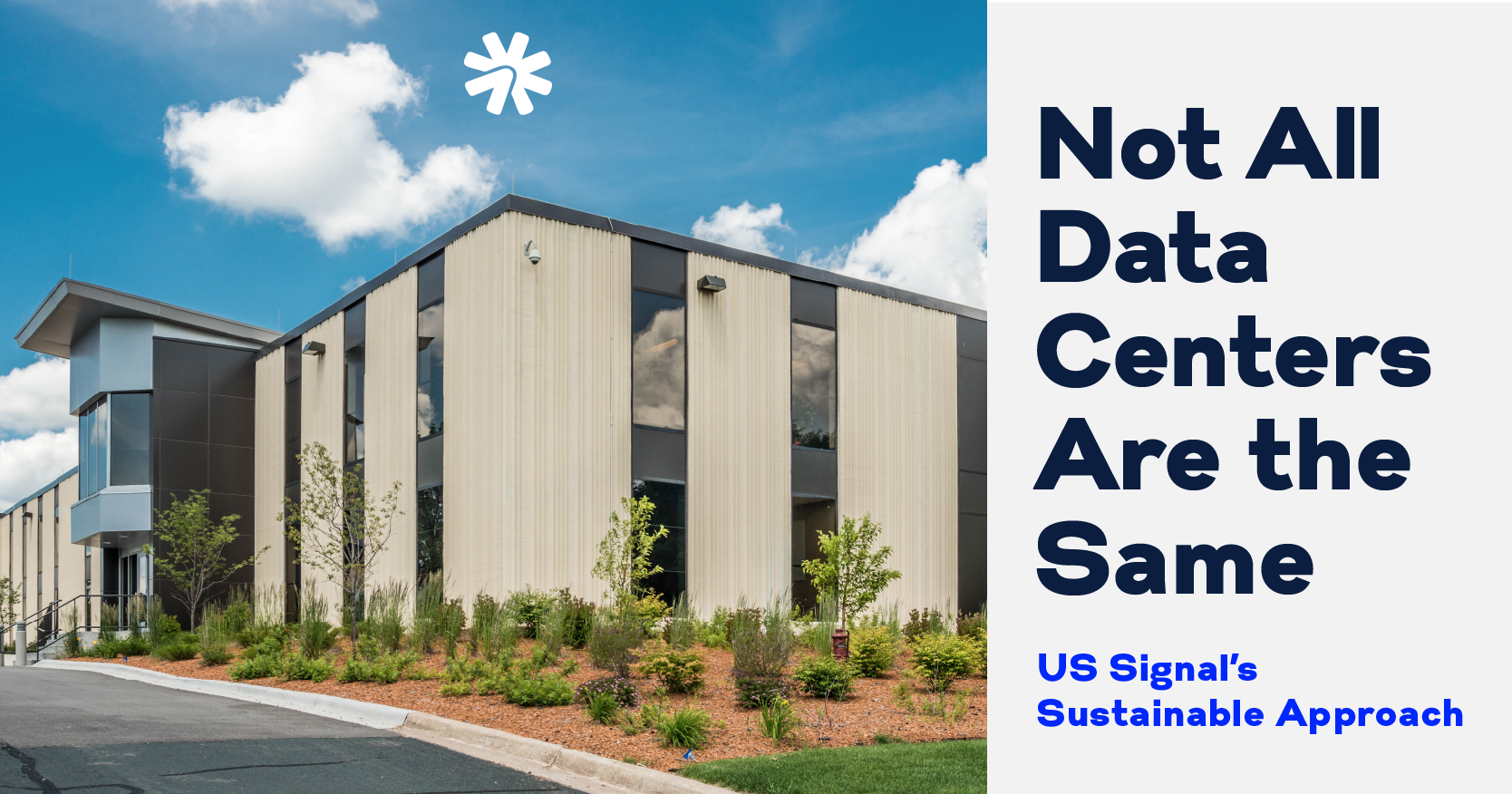Why the Cloud is Critical for Healthcare: Trends and Drivers

Healthcare organizations continue to turn to cloud technologies to improve patient care, reduce costs, streamline their operations, optimize workflows, and support both innovation and digital transformation. According to Fortune Business Insights, the global healthcare cloud computing market size is expected to grow at a CAGR of 17.60% between 2025 and 2032 to attain a value of $197.45 billion by 2032.
The Technology Driver of Healthcare
So, what’s the draw to the cloud in healthcare? Let’s start with the fact that healthcare is increasingly driven by numerous technologies and technology-powered innovations.
Technology-enabled solutions are helping healthcare organizations address changing customer preferences and even meet the needs for new business and healthcare delivery models — from telemedicine and patient portals to robotic surgery and wearable medical devices.
These technologies require IT infrastructure to power them and to deliver them where they’re needed. The cloud (and the connectivity solutions that transport data to and from it) makes that happen in what’s considered a fast, secure, and often cost-effective way.
As a result, more healthcare organizations than ever are looking to the cloud to support:
- Electronic Health Records (EHR) Systems allow healthcare organizations to securely store, access, and share patient data. That not only helps improve patient care coordination. It also facilitates better care coordination and reduces the risk of medical errors.
- Telemedicine, powered by the cloud, enables healthcare organizations to deliver remote consultations, monitoring and diagnoses through video conferencing and other communication tools. That’s allowing them to expand care access to patients in remote or underserved areas and to give patients greater choice in their care delivery.
- Clinical research and drug development by enabling researchers, clinicians, data scientists, and others to share and analyze research data faster, courtesy of cloud-based platforms. That, in turn, helps accelerate the development of new treatments and therapies.
- Medical imaging can draw on cloud-based platforms to provide the power and resources to store, manage, and share large volumes of medical imaging data, such as X-rays and MRIs. These platforms also enable healthcare providers to access and analyze these images from anywhere and at any time as long as they have an internet connection, speeding up diagnostics and treatment.
- Machine learning, artificial intelligence, and big data analytics enable h Healthcare organizations to gather, store, and process huge amounts of data. That data holds insights into patient care, population health management, and more and can ultimately lead to improved patient outcomes and cost savings. Generating those insights requires powerful analytical tools, machine learning models, and AI-driven processes — all of which use substantial computing, storage, and other resources. The cloud makes those resources available on demand with the availability to scale as needed when needed.
Benefits of the Cloud for Healthcare Organizations
It’s not just that the cloud powers the technologies healthcare organizations use. Cloud usage also offers proven business benefits, including:
- Cost savings: The use of cloud computing minimizes the need for healthcare organizations to purchase, install, maintain, secure, and upgrade physical hardware. The result — lower CapEx and OpEx.
- Scalability and flexibility: The cloud enables healthcare organizations to scale their IT infrastructure as and when needed, allowing them to seamlessly expand and contract resources. There are also different types of clouds to choose from (public, private, on-premise, or any combination of these cloud types), enabling healthcare organizations to choose where to place their workloads so they’ll get the most benefits.
- Strong data security and reduced compliance burden: The best among the cloud service providers (CSPs) employ robust security practices and technologies to maintain high levels of security. That’s essential not only to earn and maintain customer confidence. It’s critical for helping their customers safeguard patient information and meet strict data protection requirements. CSPs that are HIPAA compliant and will sign business associate agreements (BAA) can also help their customers meet their own HIPAA requirements.
- Enhanced communication and collaboration: Cloud-based platforms facilitate better communication and collaboration among healthcare professionals with real-time sharing of data and resources.
- Better experiences: The efficiencies the cloud offers in terms of optimizing workflows, powering more services (like virtual doctor visits), etc. translate into more satisfied patients — and less stressed employees throughout the chain of organizations that deal with various aspects of healthcare administration, delivery, and more.
Enabling and Supporting What’s Next
While we probably won’t see robots or AI taking over the role of physicians and other care providers, these and other technological advancements will likely play much bigger roles in future healthcare delivery. And they’ll rely on the cloud to supply the necessary power.
One area where this will likely happen is in AI-facilitated diagnostics. AI can detect diseases early and make more accurate diagnoses more quickly than conventional means. For example, a study demonstrated a 17% improvement when using AI to interpret chest X-rays compared to conventional radiology readings, providing a major boost for early detection of lung cancer.
Expect to see the use of cloud-based design and 3D printing systems increase. Research is underway into the use of 3D printers to manufacture skin tissue, organs, and even medication. The technology is already being used to create dental implants, replacement joints, and custom prosthetics. And it’s proven to facilitate manufacturing time, among other benefits. According to the American Hospital Association, the use of 3D printing reduced the time it takes to produce hearing aids from more than one week to just one day.
Compute-intensive virtual reality (VR) and augmented reality (AR), both of which benefit from the cloud, will also be used more extensively in a variety of healthcare applications. For example, VR may help people with various disorders overcome their fears by providing them with a controlled environment for social interactions. In one controlled study, participants who spent an average of two hours in VR over five treatment sessions showed a reduction in fear of heights, with an average reduction of 68%.
Wearable devices are poised to become a mainstay of the healthcare industry. Smart bandages are among the latest and feature a thin electronic layer on the bandage that has temperature sensors that monitor a wound.
The device needs to overcome cost and data storage issues before going into mass production, which is where cloud power may provide part of the solution. Companies will also increasingly count on the cloud to supply the processing power and storage required to gather and process all the data generated by the growing number and types of wearable healthcare tracking and monitoring devices.
Of course, cyber threats and other IT security issues will continue to be the nemesis of healthcare organizations. Even the cloud itself represents a target by expanding potential threat vectors. However, the cloud also offers inherent security that can help combat security threats. Always-advancing cloud-delivered managed security services will play critical roles in monitoring and defending IT systems, eradicating threats, and mitigating data losses and other damage.
What to Know. What to Do.
For all the possibilities that the cloud can and does enable in the healthcare industry, many organizations can benefit simply from moving a few basic workloads to the cloud as a way to try it out or for optimization purposes. A good way to start is to audit their current IT infrastructure and assess how it is supporting their business needs and goals — and what is needed to facilitate their future needs and goals. Then, they can then determine the appropriate next steps. That should include meeting with various CSPs or cloud consultants to discuss options and potential solutions. Watch for future blogs that will discuss specific examples of how the cloud is benefiting US Signal’s customers in the healthcare industry.



